
On a sunny plain, there was an enormous square rock. This rock was very ancient but it had a gate which was new. A splendid tower was being built on top of the rock. Twelve beautiful women watched over the tower day and night.
Near the tower there were twelve mountains. Each one was very different from the others.
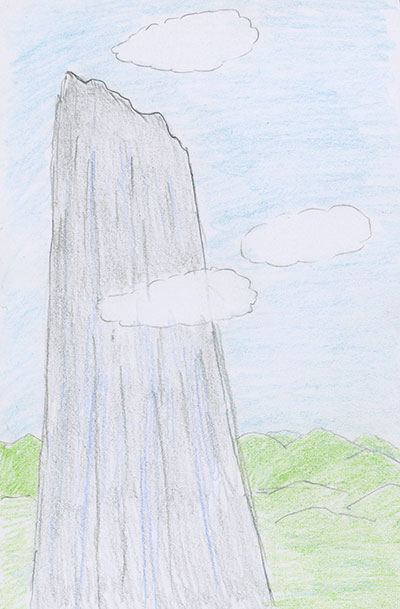
The first mountain was sheer rock with no foothold.
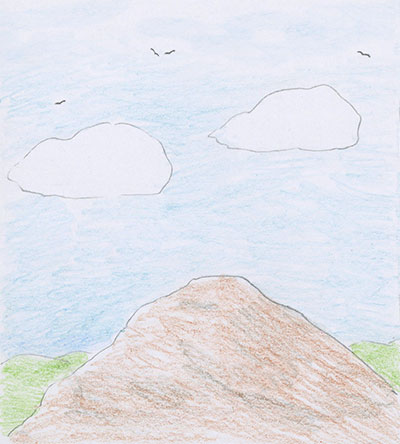
The second mountain was bare dirt. The dirt was not rich soil, only dry dust.
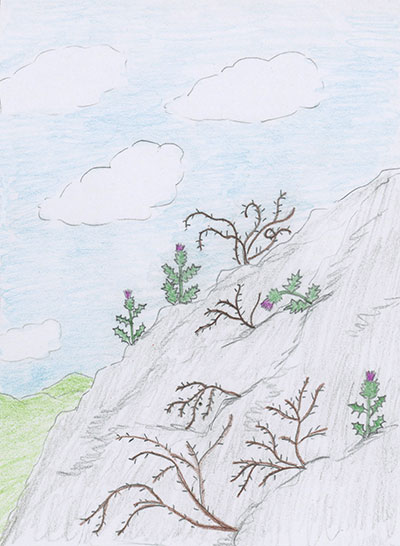
The third mountain was covered with thorns and thistles. No other plants could grow there because they would be choked by the thorns and thistles.

The fourth mountain had plants but although the tops were green, the roots were dry. Their roots were not deep enough to soak up moisture.
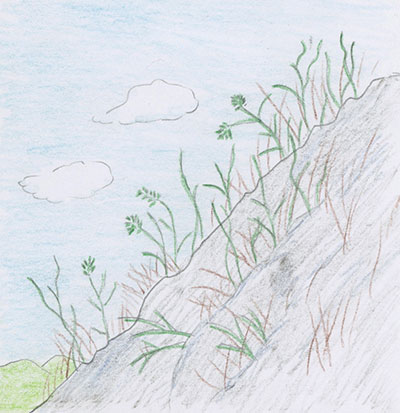
The fifth mountain was very steep. Its rough foliage was green but worthless.

The sixth mountain was covered with cracks. Some were large and some were small. There were a few plants growing from the cracks but they were drooping and weak.
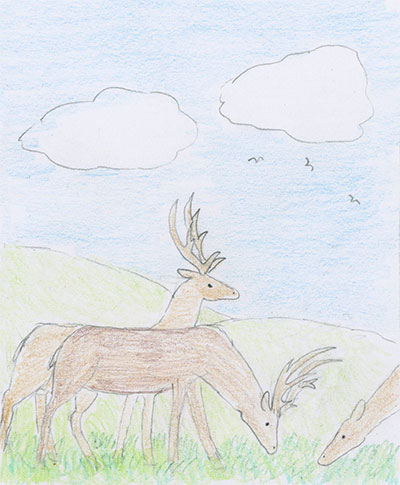
The seventh mountain was beautifully green and full of nourishing plants. Many animals fed on the plants and all life flourished.

The eighth mountain had lovely springs of flowing water. All the creatures came to drink at the clear springs.

But the ninth mountain was a desert. The only life to be found on it were deadly reptiles.
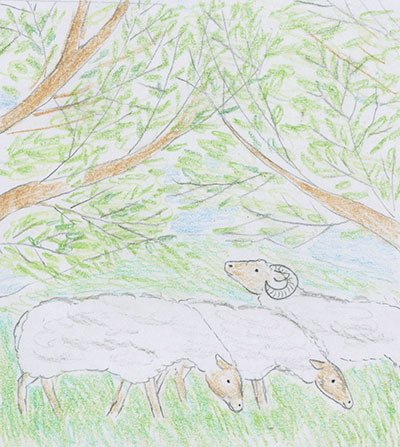
The tenth mountain was shady and pleasantly cool. Sheep grazed contentedly in the shadow of the trees.
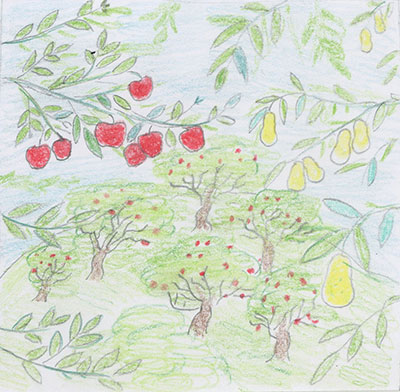
The eleventh mountain had fruit trees of various kinds and all the fruit was good to eat.

The twelfth mountain was covered in small delicate flowers. But although the flowers seemed so fragile, this mountain was the most beautiful of all. The flowers almost sparkled in the sunlight.

There were six builders who worked every day constructing the tower. They had an immense host of workers helping them. They had already built a foundation of twelve stones. Now the workers gathered large quantities of stones from the mountains. The stones appeared to be very different from each other. But when the women carried them through the gate and placed them in the tower, they all became like shining gold.
After a time, the lord of the tower came to see if it was being solidly built. He tested each rock by striking it with his staff. Many stones retained their brilliance but some now appeared opaque, or rotten, or cracked, or too short, or mottled, or rough and not fitting with others, or stained. The master commanded that these stones be removed from the building and set aside.
“Where shall we find stones to replace these?” the servants asked. “From the mountains?”
“No,” he replied. “You must take them from the plains.”
So they went and found many beautiful stones. Some were square and these they placed in the building. Others were round and these they put beside the tower because they needed to be hewn so that they could fit into the tower.
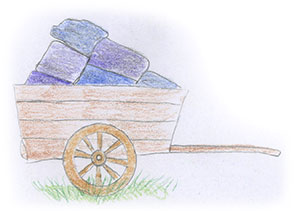
Then the master gave the stones he had removed to his servant, the Shepherd. He told him, “Clean these stones. If any can fit in with the other stones, put them back into the tower. But if any will not, return them to the mountains!”
The Shepherd and his disciple Hermas began to carefully inspect the stones to see how many they could save. They decided to leave them for two days and then they returned to see if any had changed.
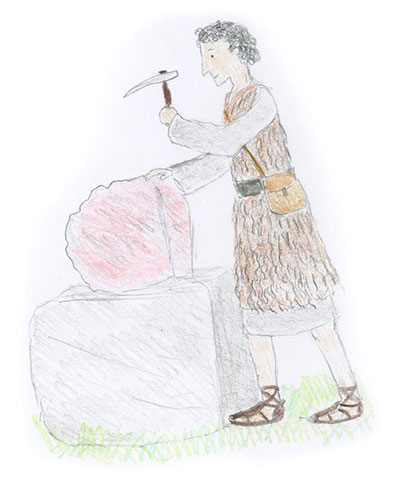
Those that were opaque had not changed. No light was seen in them and so the servants carted them away.
Then they looked at the rotten stones. Noxious plants were growing on the stones and making them crumble. If the stones could be hewn, they were put into the tower. But some had entirely crumbled into dust.
Next they considered the ones with cracks. If the cracks were small, the Shepherd could hew them but if the cracks were large it was impossible to save them.

Most of the stones that were too short could not be used but sometimes two of them could be joined together and used in one place.
When they examined the mottled stones, some had turned utterly opaque but the rest were now shining and could be used as strong support for the other stones.
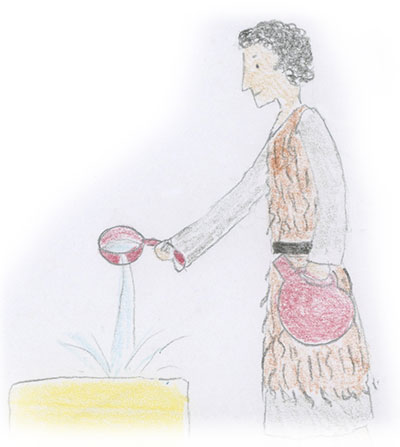
The rough stones that did not fit could be used if the Shepherd was able to file away all that kept them from joining together well. But if they were too hard, they had to be carted away.
Most of the spots could be easily removed from the stained stones but some had turned opaque and had to be rejected.
Next they turned their attention to the round stones. They chose the best ones and shaped them to fit the tower. They were carried through the door and set in their places.
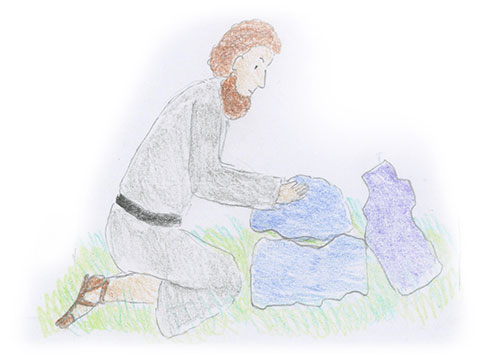
“What shall we do with the rest?” Hermas asked.
“They will be taken back to the plain,” replied the Shepherd. “But they are not rejected. The master wishes them all to be placed in the tower eventually since they are so beautiful.”
Now the tower appeared as if it were all one stone and it seemed like it had all been hewn out of one rock. But it is not complete since it is not yet the end.
Click here for an explanation of the parable.
